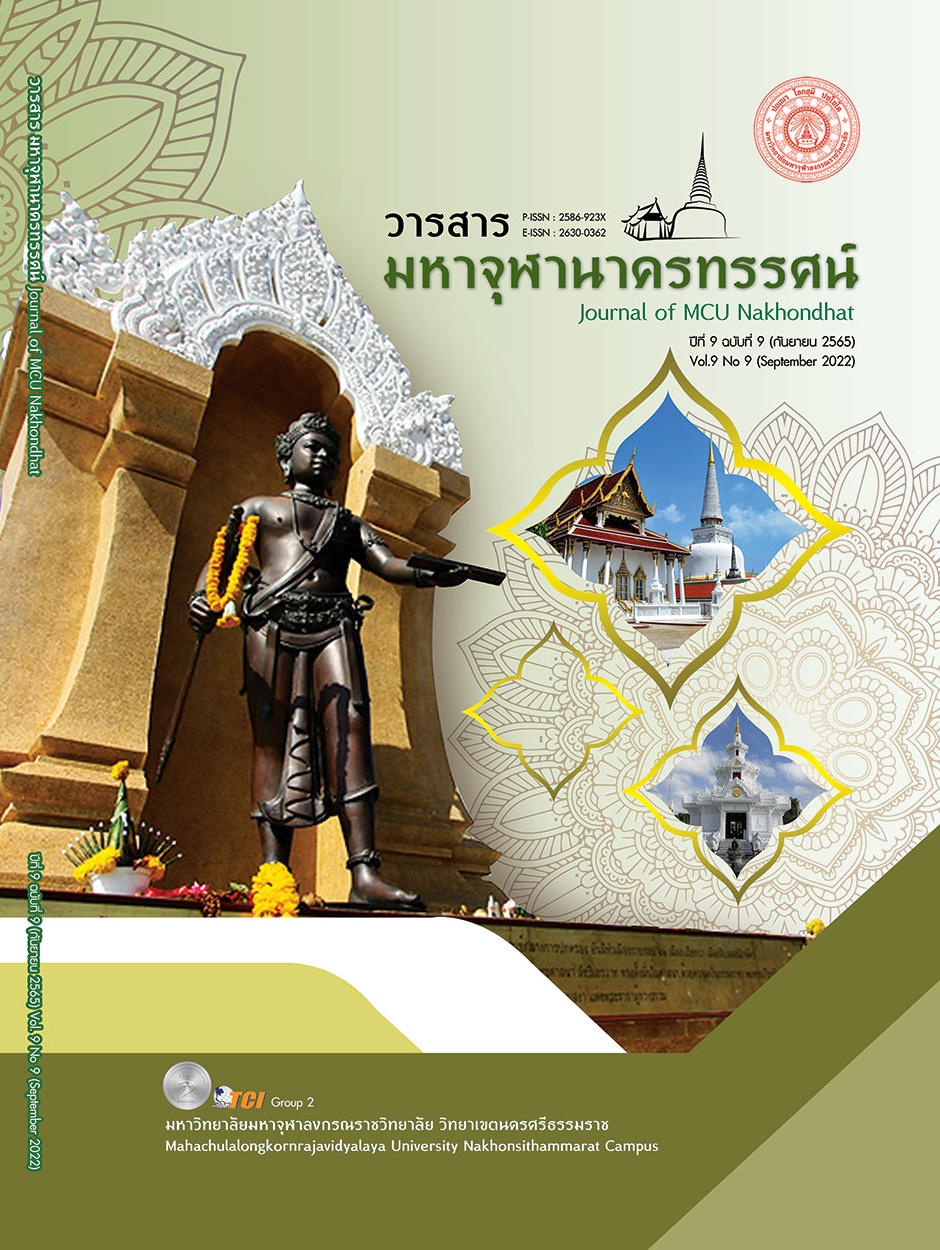EFFECT OF USING FERMENTED FERTILIZER WITH COFFEE PARCHMENT IN DIFFERENT MIXTURES ON THE GROWTH OF PAK CHOI
Main Article Content
Abstract
The objectives of this research were 1) to study the physical and chemical characteristics of coffee parchment fermented fertilizer and 2) to study the effect of coffee parchment fermented fertilizer on the growth of pak choi. The experiment was conducted at the Royal Agricultural Station Inthanon, Ban Luang Subdistrict, Chom Thong District, Chiang Mai Province. It was designed as a completely randomized design, divided into 8 treatments (8 fertilizer formulas), The coffee parchments were fermented for a month in a bag of fertilizer. The fertilizer bags were reversed and watered once a week, and then used for growing pak choi as 3 replicates per fertilizer formula for 1 month. The results showed that the planting medium for all 8 treatments had physical and chemical properties of pH values between 6.4-6.8 and the temperature between 17.77-18.33°C, which were suitable for the growth of pak choi. Treatment 1 (soil + coffee parchment + PD. 1) had the highest pH value. The treatments of 3, 4, 5, 7 had the equal temperature of 18.33 degrees Celsius, which was higher than the rest treatments. For the growth analysis of pak choi, it was found that the treatments of 1, 2 (soil + coffee parchment + PD. 1 + 100g molasses) and 3 (soil + coffee parchment + PD. 1 + 300g molasses) resulted in less stem height, the true leaf petiole length, true leaf number and fresh weight than other treatments. Regarding the treatment 5 (soil+ coffee parchment + EM + molasses) and 8 (soil) had a better promoting effect on the growth of pak choi than other treatments with statistically significant differences. However, the treatment 2 had an inhibitory effect on the growth of pak choi.
Article Details

This work is licensed under a Creative Commons Attribution-NonCommercial-NoDerivatives 4.0 International License.
References
ชไมพร แดงตุ้ย และคณะ. (2560). ผลของน้ำหมักชีวภาพจากกากและเปลือกเมล็ดกาแฟต่อการเจริญเติบโตของผักกาดฮ่องเต้. วารสารวิจัยราชภัฏพระนคร สาขาวิทยาศาสตร์และเทคโนโลยี. 12(2), 54-63.
ธีรวุฒิ ลาภตระกูล. (2551). การใช้ประโยชน์จากวัสดุเหลือทิ้ง จากการปลูกมันสำปะหลัง และกระบวนการผลิตแป้งมันสำปะหลังเพื่อการผลิตปุ๋ยหมัก. กรุงเทพมหานคร: มหาวิทยาลัยเทคโนโลยีพระจอมเกล้าธนบุรี.
ธัญวดี ศรีธาวิรัตน์. (2547). การศึกษากระบวนการทำปุ๋ยหมักจากเศษอาหารร่วมกับเศษวัสดุเหลือทิ้งทางการเกษตร. ใน รายงานการวิจัย. มหาวิทยาลัยราชภัฏพิบูลสงคราม.
ปริยานุช จุลกะ และคณะ. (2557). ผลของวัสดุปลูกที่มีส่วนผสมของกากกาแฟต่อการงอกและการเจริญเติบโตของต้นกล้ามะเขือเทศ. ใน รายงานสืบเนื่องการประชุมวิชาการและเสนอผลงานวิจัยพืชเขตร้อนและกึ่งร้อน ครั้งที่ 8. กรุงเทพมหานคร. มหาวิทยาลัยหอการค้าไทย.
ปัทมา หาญนอก และคณะ. (2563). การตรวจสอบเบื้องต้นลักษณะทางกายภาพของข้าวโพดปลูกในดินที่ประกอบด้วยกากกาแฟเหลือทิ้ง. วารสารผลิตกรรมการเกษตร, 2(3), 63-72.
พิมพ์เพ็ญ พรเฉลิมพงศ์ และ นิธิยา รัตนาปนนท์. (2562). Parchment coffee / กาแฟกะลา. สืบค้นเมื่อ 23 ตุลาคม 2562, จาก https://www.foodnetworksolution.com/ wiki/word/2778/parchment-coffee-กาแฟกะลา
สุธา ทองขาว. (2559). ผลของกากกาแฟหมักด้วยเชื้อจุลินทรีย์อีเอ็มที่มีต่อการเจริญเติบโตของผักบุ้งจีน. ใน รายงานการวิจัย. วิทยาลัยเกษตรและเทคโนโลยีเชียงใหม่.
สำนักงานเศรษฐกิจการเกษตร. (2557). กาแฟ สรุปสภาวะการผลิต การตลาด และราคาในประเทศ. สืบค้นเมื่อ 19 กันยายน 2562, จาก http://www.oae.go.th/ewt_ news.pHp?nid=17878&filename=index
สำนักบริหารยุทธศาสตร์. (2555). แผนพัฒนาเศรษฐกิจและสังคมแห่งชาติ ฉบับที่ 11 (2555-2559). สืบค้นเมื่อ 19 กันยายน 2562, จาก http:/oaep.diw.go.th/policy/?p=110
สำนักวิจัยเศรษฐกิจการเกษตร. (2556). สถานการณ์สินค้าการเกษตรที่สำคัญและแนวโน้ม ปี 2557. กรุงเทพมหานคร: อักษรสยาม.
Campos-Vega et al. (2015). Spent coffee grounds: A Review on current research and future prospects. Trends in Food Science & Technology, 45(1), 24-36.
Janissen, B,. & Huynh, T. (2018). Chemical composition and value-adding applications of coffee industry by-products: A review. Resources, Conservation & Recycling, 128 (2018), 110-117.
Kelley, W.T. (1999). Specialty crops: Chinese cabbage and related oriental crops, Extension Horticulturist-Vegetable Crops. Retrieved October 6, 2019, from
https://docplayer.net/49128121-Specialty-crops-chinese-cabbage-and-related-oriental-crops.html
Medthai. (2562). ผักกวางตุ้ง สรรพคุณและประโยชน์ของกวางตุ้ง 13 ข้อ!. Retrieved October, 27, 2562, from http://medthai.com/ผักกวางตุ้ง/
Mohanpuria, P., & Yadav, S.K. (2009). Retardation in seedling growth and induction of early senescence in plants upon caffeine exposure is related to its negative effect on Rubisco. Photosynthetica,47(2), 293-297.
Reigosa, M.J., & Pasoz-malvido, E. (2007). Phytotoxic effects of 21 plant secondary metabolites on Arabidopsis thaliana germination and root growth. Journal of Chemical Ecology, 33(7), 1456-1466.
Shemekite et al. (2014). Coffee Husk Composting: An Investigation of the Process Using Molecular and Non-Molecular Tools. Waste management, 34 (3), 642-652.
Yenani et al. (2020). Organic fertilizer of coffee peel with PUMAKKAL starter formula for sustainable plantation cultivation. Paper presents in Young Scholar Symposium on Science Education and Environment (YSSSEE), Lampung, Indonesia.


